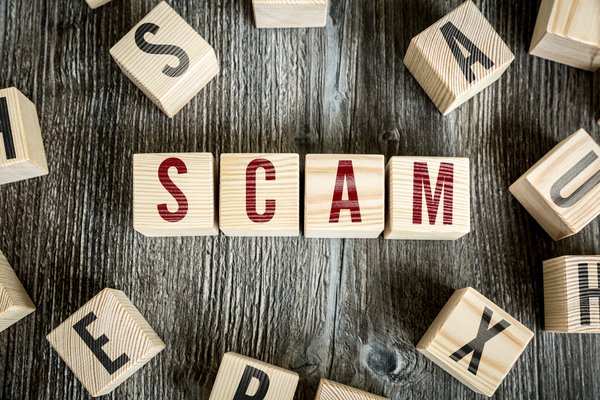If you use Bitcoin (CRYPTO:BTC), you're bound to run into the term "Satoshi." It's the first name of the pseudonym chosen by Bitcoin's anonymous creator, but it later became the title of a denomination of the cryptocurrency. Here's everything you need to know about what a Satoshi is and how it works.

What is a Satoshi?
A Satoshi is the smallest unit of the Bitcoin cryptocurrency. It represents one-hundred-millionths of one Bitcoin, which can also be expressed as 0.00000001 BTC. That means there are 100 million Satoshis, sometimes called "sats" for short, in one Bitcoin.
Even with how much Bitcoin has increased in value over the years, a Satoshi is still worth a very small fraction of a cent. For a Satoshi to be worth $0.01, Bitcoin would need a value of $1 million.
How Satoshi works
Since a Satoshi is a denomination of Bitcoin, it works exactly as Bitcoin does. Sometimes people describe a quantity of Bitcoin in Bitcoin and sometimes in Satoshi, depending on whether they are talking about a round number of Bitcoin or just a fraction of one. Having the Satoshi as a granular measure of a Bitcoin makes it more convenient to use as payment for goods and services, like cents do for the dollar.
Let's say that Bitcoin has a value of $25,000, and you want to use it to buy a $4 cup of coffee at a tech-savvy cafe that accepts crypto payments. The cafe could ask you to pay 0.00016 BTC, or it could give you a bill for 16,000 Satoshi. It's the same amount of Bitcoin but just a simpler way of expressing it -- and with no decimal points required.
Ultimately, when you trade Satoshi, you are trading Bitcoin (and vice versa). Bitcoin is a blockchain network secured by Bitcoin mining for the purpose of providing a peer-to-peer payment system.
History of Satoshi
The creator of Bitcoin chose to remain anonymous and used the pseudonym Satoshi Nakamoto. When developing Bitcoin, Nakamoto decided to make it divisible up to 100 million units but didn't come up with any names for these smaller units of Bitcoin outside of referring to them as "coins."
A member of the BitcoinTalk forum, ribuck, first mentioned the idea of using "Satoshi" as the name for a unit of Bitcoin on Nov. 15, 2010. Ribuck originally suggested it to refer to one- hundredth of a Bitcoin but later put it forward as the term for one-hundred-millionth of a Bitcoin. Other members of the forum agreed, and it caught on from there.
How to use Satoshi
Since Satoshi are Bitcoin, only of a different denomination, you can use Satoshi and Bitcoin interchangeably. Just be sure to do the math correctly if you ever need to calculate their equivalent value! You can:
- Buy and sell it on cryptocurrency exchanges.
- Pay for purchases with it at merchants who accept Bitcoin.
- Trade it for other types of cryptocurrency.
- Hold on to it for the long term if you're investing in cryptocurrency.
If you want to use Satoshi, the first step is to buy a fraction of a Bitcoin. You can do so on practically all crypto apps and exchanges. Since Bitcoin is the first and largest cryptocurrency, it's a good bet that any platform selling cryptocurrency will have Bitcoin available.
After you've bought Bitcoin, it's generally recommended that you transfer it to your own crypto wallet. There are digital wallets, also known as hot wallets, which are usually free. There are also hardware wallets, or cold wallets, that you can buy to safely store your crypto offline.
Transferring crypto to your wallet ensures that you're in control of it, and it allows you to use that crypto for purchases if you want.
You might be wondering what the difference is between using Satoshi and Bitcoin. There really isn't since it's just a matter of which term you and anyone else involved in the transaction prefer. Merchants could provide prices in Bitcoin or Satoshi, and you could refer to your transactions with either term. At the moment, a Satoshi isn't nearly as well-known as a Bitcoin, so you may need to explain it to some people if you use it regularly.
Related Fintech Topics
Satoshi vs. other digital denominations
Besides Bitcoin and Satoshi, other cryptocurrencies have their own digital denominations. Here are a few examples:
| Metric | Ethereum (CRYPTO:ETH) | Cardano (CRYPTO:ADA) | BNB (CRYPTO:BNB) | Stellar (CRYPTO:XLM) |
|---|---|---|---|---|
| Smallest unit | Wei | Lovelace | Jager | Stroop |
| Value | One-quintillionth of one ETH | One-millionth of one ADA | One-hundred-millionth of one BNB | One-hundred-thousandth of one XLM |
| Written as cryptocurrency | 0.000000000000000001 ETH | 0.000001 ADA | 0.00000001 BNB | 0.0000001 XLM |
Considering Bitcoin's value, it's helpful to have a term to refer to smaller amounts of the cryptocurrency. Satoshi fills that role and serves as a homage to the person or people who invented Bitcoin in the first place.
Satoshi FAQs:
How many Satoshi are in a Bitcoin?
There are 100 million Satoshi in a Bitcoin.
How can I buy Satoshi?
Are Satoshi the same as Baby Satoshi?
You might come across a crypto with a very similar name to Bitcoin's Satoshi unit. There was a new crypto introduced in 2021 called "Baby Satoshi (SATS)." Do not be fooled. That crypto project is not formally related to Bitcoin or Satoshis.





























































































































